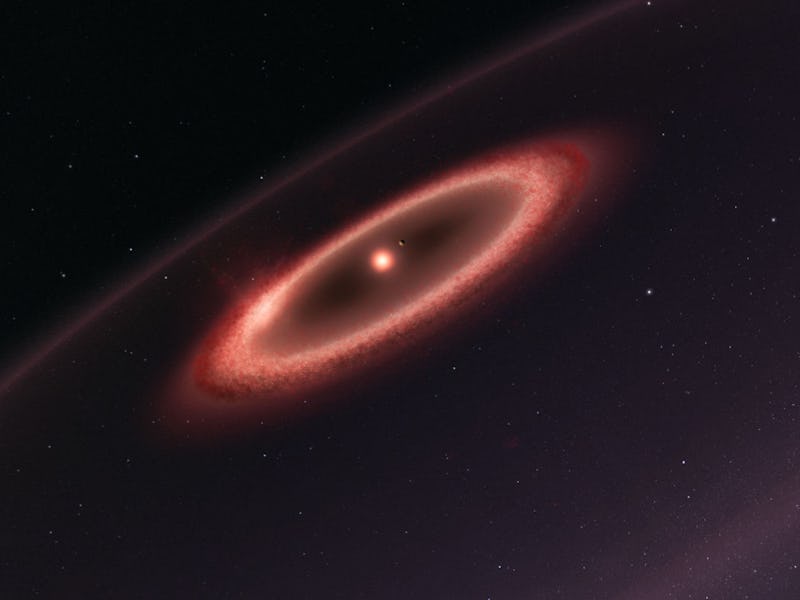It’s hard to believe that it’s only been a little over a year since astronomers confirmed the existence of a nearby exoplanet called Proxima b, located just 4.22 light-years from Earth. Ever since its discovery, the planet and its red dwarf star, Proxima Centauri, have been a hot topic because of Proxima b’s potential habitability. Now, an international team of scientists say there’s mounting evidence that the planet is not alone in its system.
Recently, astronomers at the ALMA Observatory in Chile spotted an unusual glow radiating from a dust belt 1 to 4 astronomical units — or 1 to 4 times Earth’s distance from the sun — from Proxima Centauri. Scientists estimate that this region could be as cold as -382 degrees Fahrenheit (-230º C), which is similar to the temperature in our solar system’s Kuiper Belt out beyond Neptune.
Since belts are basically home to failed planets — stuff that never formed into larger bodies — it could mean that this dust belt contains material that ranges from tiny particles to asteroids and more. The team’s findings are available online via the European Southern Observatory (ESO), and have been accepted for publication in The Astrophysical Journal Letters.
“The dust around Proxima is important because, following the discovery of the terrestrial planet Proxima b, it’s the first indication of the presence of an elaborate planetary system, and not just a single planet, around the star closest to our sun,” the study’s lead author, Guillem Anglada, of the Instituto de Astrofísica de Andalucía (CSIC), explained in a press release.
Digitized Sky Survey 2; Acknowledgement: Davide De Martin/Mahdi Zamani
It gets even spicier: ALMA observations suggest this system might have another dust belt that’s even colder and farther away from Proxima Centauri. If confirmed, this would mean that Proxima Centauri is more similar to our solar system than we think — after all, we have two belts as well, the asteroid belt between Mars and Jupiter and the Kuiper Belt. This new information leaves a lot of material for astronomers to explore, literally and figuratively.
“This result suggests that Proxima Centauri may have a multiple planet system with a rich history of interactions that resulted in the formation of a dust belt,” Anglada said. “Further study may also provide information that might point to the locations of as yet unidentified additional planets.”
Hopefully, further study will reveal more exoplanets in this weird star system. It’d be a shame for Proxima b to be floating out there in the void all alone.
If you liked this article, check out this video where scientists have proven that life could exist on Mars.
